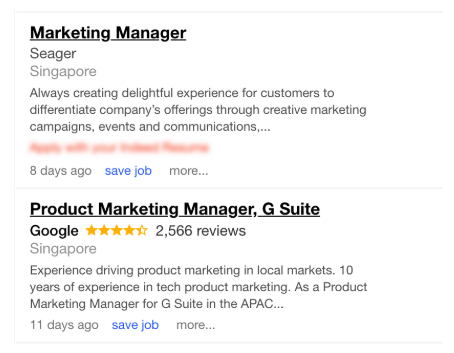To the uninitiated, hiring might seem like an easy process.
Just throw a job advertisement onto one of the many job posting sites and portals available in Singapore, sit back, and wait for the applications to roll in.
Easy, right?
True enough, you’ll probably get a flood of applications if you’ve published a half-decent job ad.
But this is one of those cases where quantity does not equate to quality.
In a survey conducted by Robert Half, 40 percent of executives cited the “challenging search of sourcing candidates with the right skills” as a key factor that slows down their recruitment processes.
In other words, welcome to a dreary week (or more!) of wading through half-baked applications from unqualified candidates who clearly hadn’t bothered to read the job ad properly.
And by the time you find a candidate that actually fulfilled your criteria? He/she would probably be halfway through the interview process with another company.
“Being in short supply, qualified IT professionals are well aware of their market value and are not likely to wait around during a slow hiring process,” explains Matthieu Imbert-Bouchard, managing director at Robert Half Singapore.
“Companies need to act fast if they want to secure the right and best talent for their teams.”
Competing with Tech Giants for Talent in Singapore
Passive recruitment methods, such as posting job ads, might have been sufficient once upon a time. But in small countries like Singapore - where the talent crunch is real - it is just not enough.
Nowhere is this felt more strongly than in the tech industry. An estimated 42,000 workers, says Singapore’s Communications and Information Minister Yaacob Ibrahim, will be needed for the infocommunications technology sector in the next three years.
And as more businesses start to go digital, the demand for tech talent will certainly not slow down in the years after.
According to a study published by industry association SGTech, 85 percent of the companies surveyed cited manpower constraints as “the top challenge faced in the preceding 12 months.”
Don’t get me wrong – there are plenty of talented, skilled individuals in Singapore.
However, with Singapore becoming a hotspot for tech giants like Google and Facebook – who recently further expanded their footprint locally – it is getting increasingly harder for startups and SMEs to compete and attract talent.
Active Recruiting Adds the Personal Touch

One of the most effective ways that smaller companies can stand a chance is to give their recruitment outreach methods a personal touch.
And generic job ads are anything but personal.
Furthermore, let’s be honest: if you were looking for a marketing position, and saw a job ad from Google and Seager next to each other, which would you click on?
No offence, Seager, but Google will likely win nine times out of 10.
So how can a recruiter get the jump on these big-name brands?
The answer lies in active recruiting.
As the name implies, this involves putting yourself out there to broaden your network, and build relationships with talented individuals who are not necessarily looking for a job – yet.
Interacting regularly with members of popular developer Facebook groups, for instance, is a great example of active recruitment in action.
Reaching the Right People
Doing active recruiting is very similar to building a sales pipeline.
You’re intentionally crafting a network of individuals who fit the profile of candidates you want to hire in the long run, and gradually convincing them of the mission and vision of your company.
One in two Singaporeans is unhappy at work, according to JobStreet’s Job Happiness Index 2017, which means that there’s a good chance that you can snag the right talent if you play your cards right.
But chances are zero if you are unable to reach this pool of talent in the first place. Hence, the legwork.
Looking for Cultural Fit
Active recruiting also gives you the opportunity to show rather than tell candidates about your company’s values and culture.
While the notion of “culture-fit” was once rubbished by many, it has in fact established itself as a top five priority by many Singapore professionals, according to a Hudson survey conducted in 2015.
In other words, people want to feel a sense of belonging in the company that they work at. And having a relationship with your candidates gives you an advantage over bigger companies with less capacity to nurture them.
Over to you
Yes, active recruiting will definitely take more effort as compared to passive recruiting.
But tough times call for tough measures.
In upcoming articles, we will take a look at the various communities, events, and social media marketing channels you can leverage on to source for good candidates in Singapore.
If you’re up for the challenge, then stay tuned!

/assets/images/3180241/original/8f1f0419-9291-478b-bea4-e35caf3a9f65?1540349073)